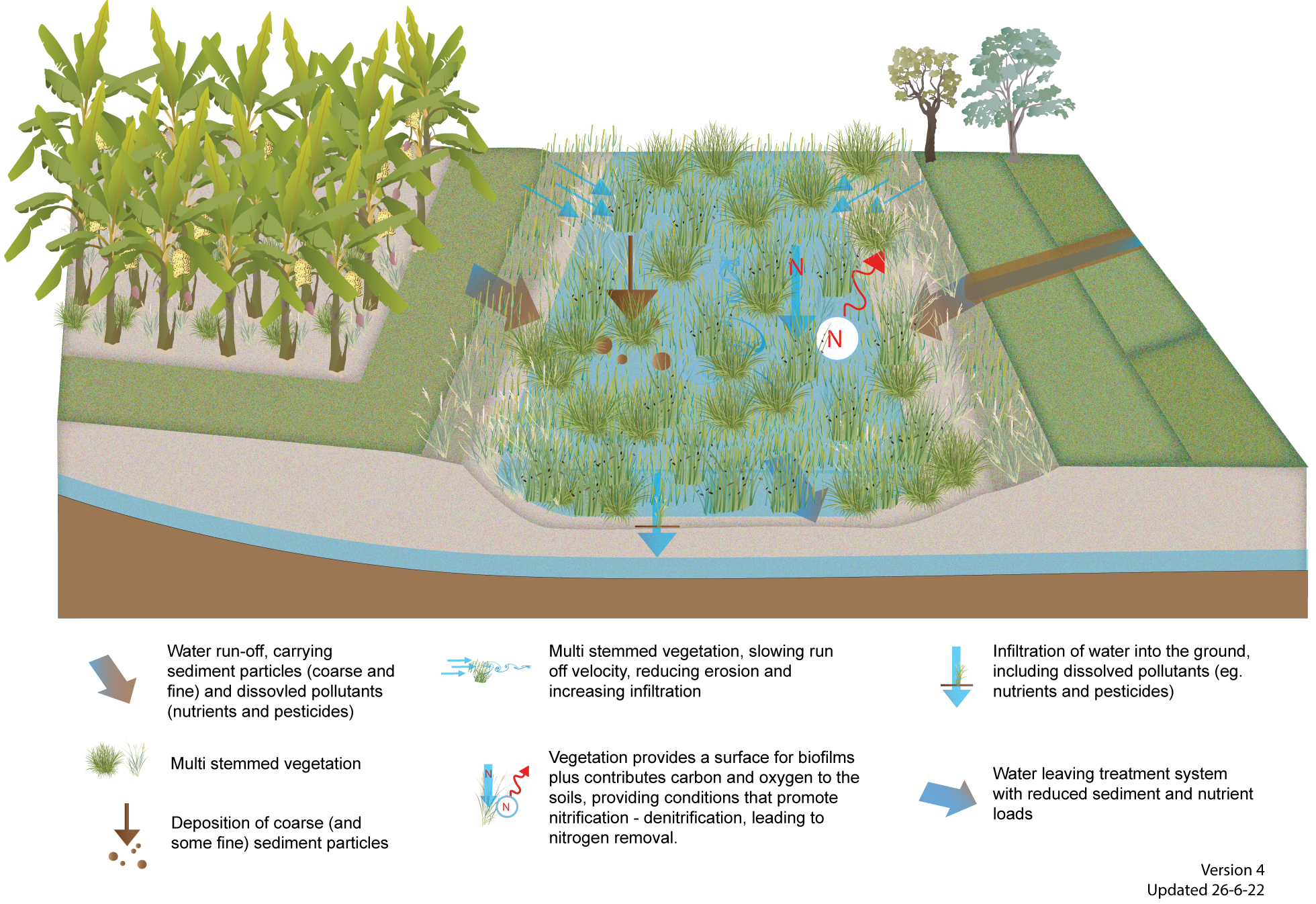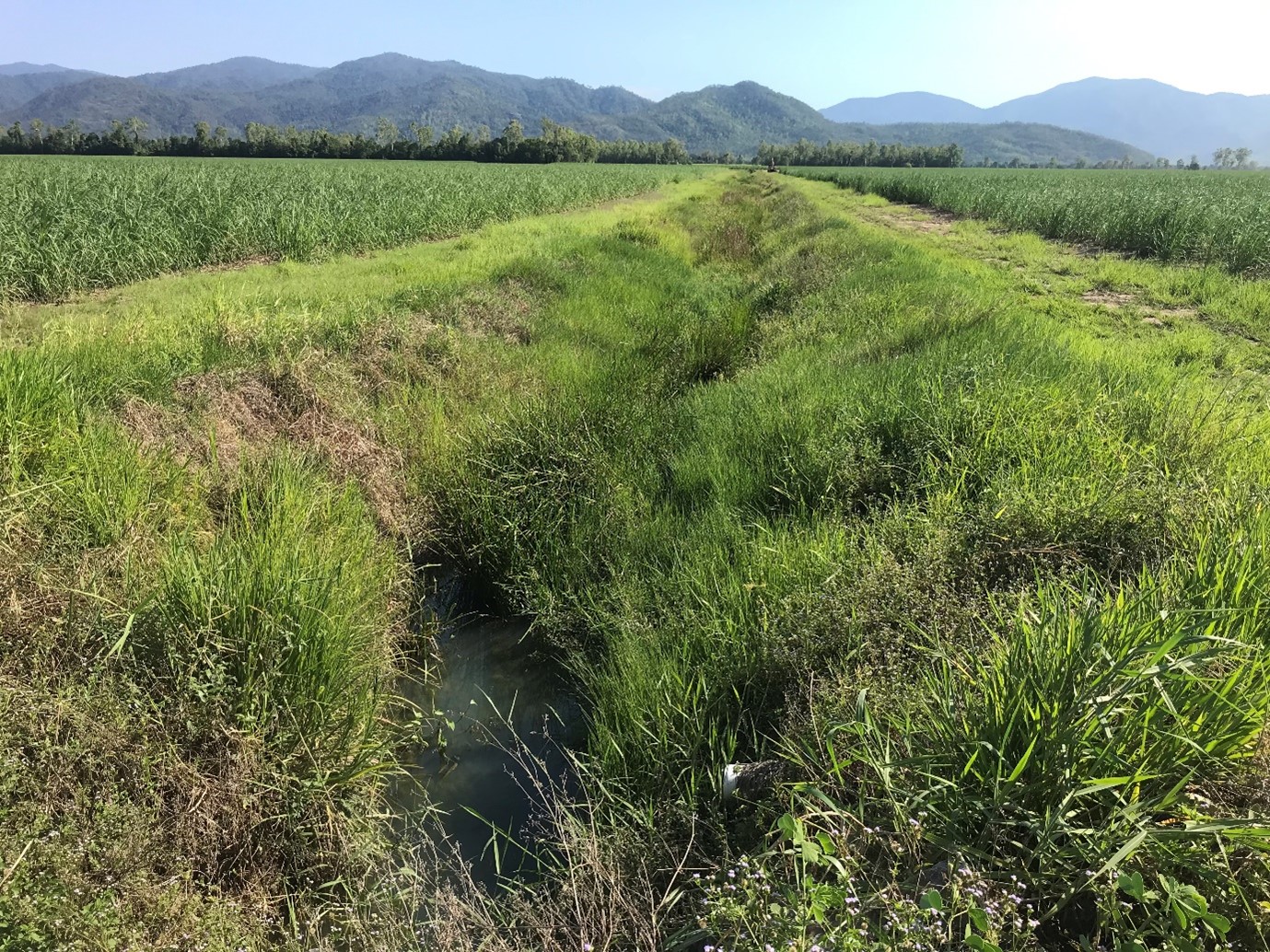|
|
Vegetated drainsVegetated drainsSelect from the tabs below Other name/sGrassed drain, vegetated drainage ditches, two-stage ditch DescriptionVegetated drains are open channels for conveying water, where vegetation covers most of the banks and bed. Drains are common throughout agriculture and aquaculture production areas. Traditionally, drains are sprayed and kept devoid of vegetation, but they can be readily modified and/or managed to promote vegetation and, in turn, improve water quality. The difference between drains and swales, is that swales are dry most of the time whereas drains often hold water for extended periods. Drains are usually located on flat and backwatered locations which results in them holding water. Some drains intercept groundwater, so they could treat both surface run-off and shallow groundwater. Vegetated drains are often a best management practice in agricultural production systems to convey water away from production areas, whilst minimising erosion. They can have a secondary benefit as a treatment system. When used as a treatment system, vegetated drains work by slowing the water velocity (vegetation causes drag by increasing friction), causing settling of coarse to medium sediments. Nutrients and toxicants can also be removed through nitrification/denitrification, adsorption to the plant or soil material and uptake by vegetation[1][6]. Their effectiveness as a treatment system depends on site conditions and their design and management[3][2]. Facilitating vegetation growth within drains enhances their treatment potential, by increasing residence time. This provides a surface for the growth of biofilms and carbon and oxygen in the soils, which promotes nitrification/denitrification[7][1]. Research shows that vegetated drains provide significantly higher nitrate removal than unvegetated drains[7] and that a non-vegetated drain would need to be 2-3 times longer than a vegetated drain to remove the same quantity of pesticide[5]. Vegetated drains can provide a pre-treatment function for other systems in a treatment train by preventing erosion, trapping coarse to medium sediments and removing some nutrients, prior to run-off entering other treatment systems such as treatment wetlands or bioreactors. Effectiveness as a treatment systemA 460m long vegetated drain on a sugarcane farm in the Wet Tropics region removed over 50% of dissolved inorganic nitrogen (DIN)[3], the equivalent of 0.32kg/yr of DIN per metre of drain. This drain was effective at removing DIN as it contained patches of dense vegetation and had adequate hydrological characteristics to support denitrification, including[4]:
When drains are built and managed using similar principles to a treatment wetland (i.e. mostly vegetated, adequate flow and retention time) they can remove DIN through denitrification. They generally do not remove as much DIN per hectare as a well-designed and maintained treatment wetland[3]. But drains are common in farming landscapes and could be modified and managed at minimal cost to increase their nitrogen removal capacity, making them relatively cost-effective. A drain on a sugarcane farm in the Wet Tropics region that was widened to slow water velocity, with vegetation allowed to establish, was estimated to remove DIN at a cost of $49 per kilogram[3]. This calculation included upfront design, project management and excavation costs (to widen the existing drain) and maintenance costs, including sediment removal every 10 years. Costs would be considerably less if a landowner were able to conduct the work with their own equipment. The actual cost-effectiveness of a vegetated drain will vary for each individual site. The cost-effectiveness needs to be considered relative to other treatment systems or management intervention options. Refer to cost considerations for more information. Services and benefits
Drains can have trees planted on the edge for habitat purposes and to provide other services, however the focus of this content is on water quality improvement. DisclaimerIn addition to the standard disclaimer located at the bottom of the page, please note the content presented is based on published knowledge of treatment systems. Many of the treatment systems described have not been trialled in different regions or land uses in Queensland. The information will be updated as new trials are conducted and monitored. If you have any additional information on treatment systems or suggestions for additional technologies please contact us using the feedback link at the bottom of this page. References
Last updated: 24 May 2022 This page should be cited as: Department of Environment, Science and Innovation, Queensland (2022) Vegetated drains, WetlandInfo website, accessed 25 June 2024. Available at: https://wetlandinfo.des.qld.gov.au/wetlands/management/treatment-systems/for-agriculture/treatment-sys-nav-page/vegetated-drains/ |

 — Department of Environment, Science and Innovation
— Department of Environment, Science and Innovation



